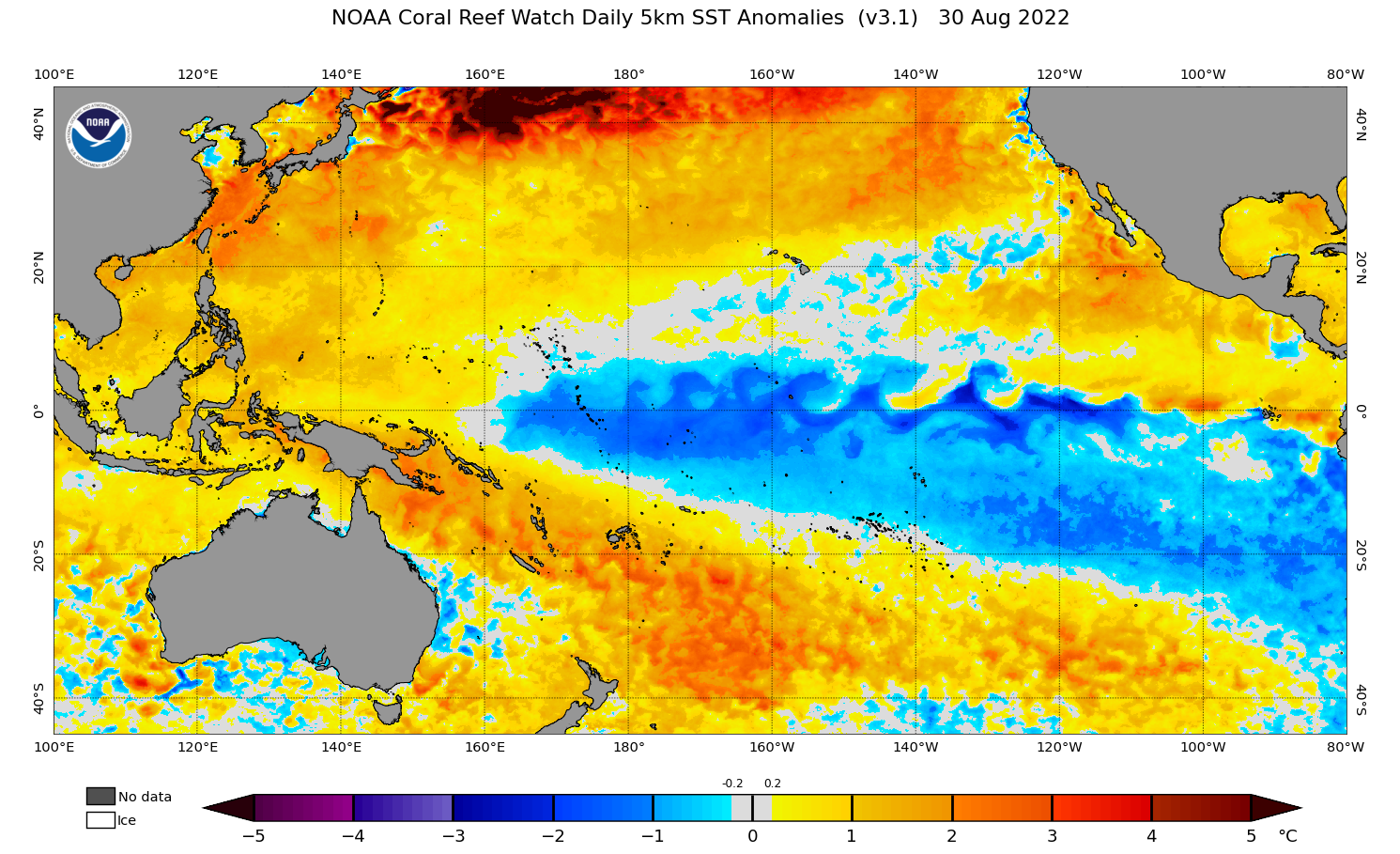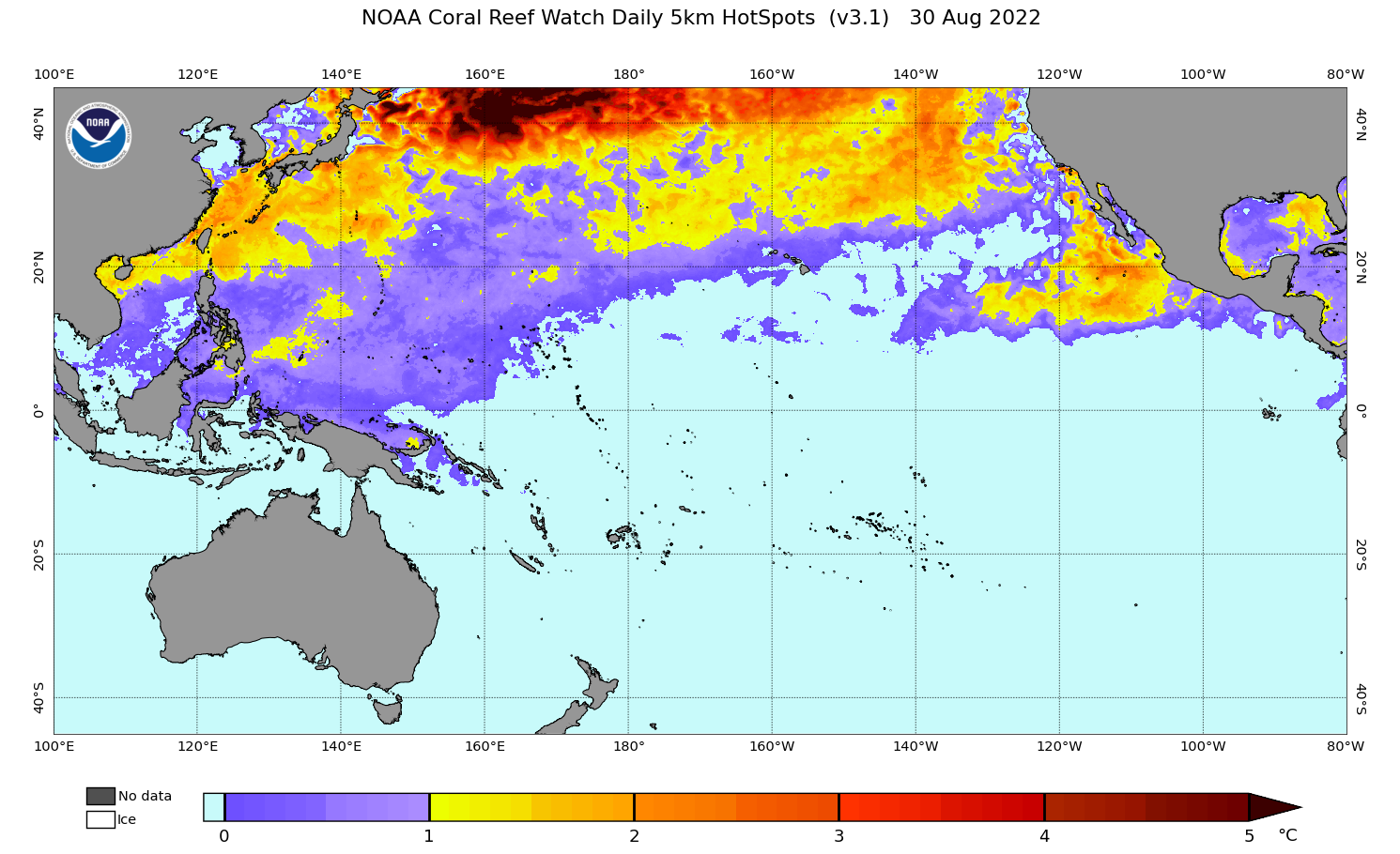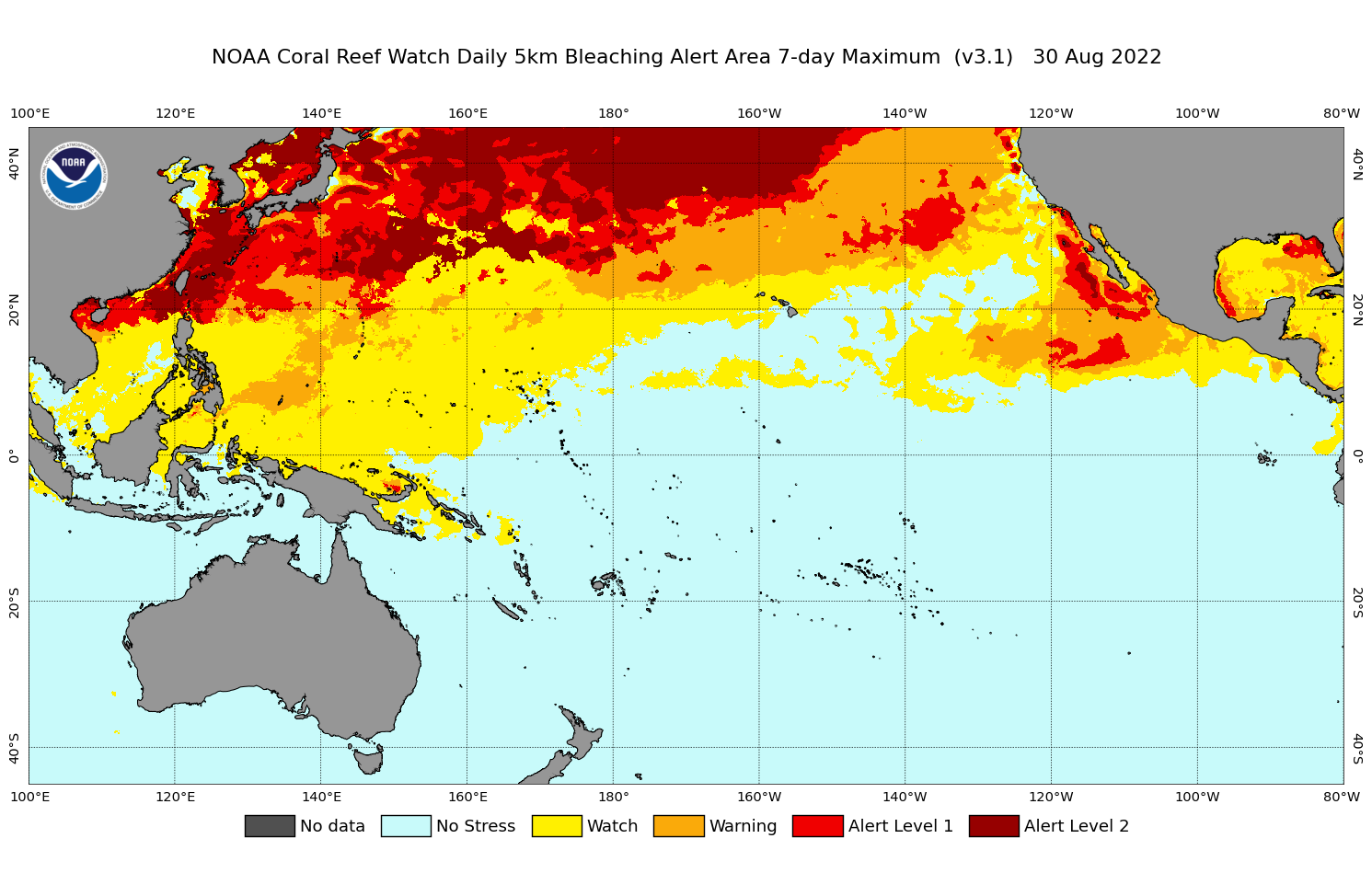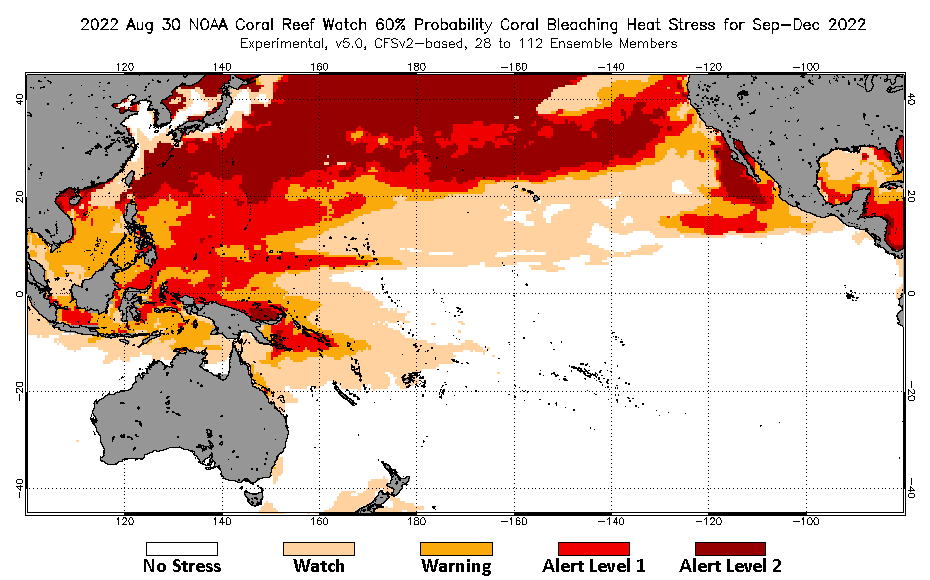Coral Bleaching Heat Stress Analysis and
Seasonal Guidance through December 2022
(Released August 31, 2022)
Current conditions:
NOAA Coral Reef Watch's (CRW) near real-time satellite monitoring shows the sea surface temperature (SST) as being predominantly below-average across most of the central and eastern equatorial Pacific Ocean (Figure 1); this is consistent with the ongoing La Niña. SST anomalies remain above-average in areas of the western Pacific, including the Commonwealth of the Northern Mariana Islands (CNMI), Guam, the Federated States of Micronesia (FSM), Palau, and Papua New Guinea (PNG). Above-average SSTs (as much as 2°C above normal) have persisted around the Northwestern Hawaiian Islands (NWHI) since June 2022. As of August 11, 2022, the NOAA National Centers for Environmental Prediction's (NCEP) El Niño-Southern Oscillation (ENSO) Alert System remains at La Niña Advisory. La Niña is expected to continue, with chances for it gradually decreasing from 86% in the coming season to 60% during December 2022-February 2023.

|
||
|
Figure 1. NOAA Coral Reef Watch's Satellite Sea Surface Temperature (SST) Anomaly product for the Pacific region. |
||
Over the past three months, Coral Bleaching HotSpots have been concentrated in the Northern Hemisphere. Regions where HotSpots exceeded 1°C are located between the NWHI and northern CNMI and throughout Eastern Asia in the South and East China Seas (Figure 2). As of August 29, 2022, coral bleaching heat stress has reached Alert Level 2 (Figure 3) in most of the South and East China Seas, from northern Vietnam, through Taiwan, to Japan. Severe, widespread coral bleaching has been reported off the Iriomote and Ishigaki Islands in the Yaeyama Islands of Okinawa Prefecture and around parts of Okinawa Main Island in Japan. In Taiwan, surveys conducted at 20 monitoring sites around the island and off the Green and Orchid Islands showed only sporadic coral bleaching, mainly in waters shallower than two meters. The northern CNMI and the NWHI are at Alert Level 1; Palau and the Western FSM are at Bleaching Warning; and the remaining majority of the Pacific is at Bleaching Watch or No Stress (Figure 3). Of note, in June 2022, the Nha Trang Bay Management Authority in Vietnam closed popular scuba diving areas off Hon Mun Island to help protect the bleached and damaged reefs there.

|
||
|
Figure 2. NOAA Coral Reef Watch's Satellite Coral Bleaching HotSpot product for the Pacific region. |
||

|
||
|
Figure 3. NOAA Coral Reef Watch's Satellite Bleaching Alert Area (7-day maximum) product for the Pacific region. |
||
CRW's most recent, modeled Four-Month Coral Bleaching Outlook (Figure 4) projects heat stress will continue to increase in the Northern Hemisphere through November 2022. Alert Level 2 stress is predicted in the CNMI and NWHI by October 2022. Overall, the oceanic heat stress is expected to dissipate in December with the onset of Northern Hemisphere winter.

|
||
|
Figure 4. NOAA Coral Reef Watch's Four-Month Coral Bleaching Outlook of August 30, 2022, for the period September-December 2022, for the Pacific region. |
||
***NOTE: We recommend that users continue to monitor updates in the Four-Month Outlook predictions (https://coralreefwatch.noaa.gov/satellite/bleachingoutlook_cfs/index.php), for their regions of interest/concern, over the months ahead, along with the changes in coral bleaching heat stress detected by our near real-time satellite products (https://coralreefwatch.noaa.gov/product/5km/index.php).***
CRW's current satellite and modeled products can be found at:
https://coralreefwatch.noaa.gov/index.php
CRW's modeled Four-Month Coral Bleaching Heat Stress Outlooks can be found at:
https://coralreefwatch.noaa.gov/satellite/bleachingoutlook_cfs/outlook_cfs.php
CRW's 5km satellite Regional Virtual Stations can be found at:
https://coralreefwatch.noaa.gov/product/vs/map.php
Sign up for automated bleaching alert emails for CRW's 5km Regional Virtual Stations at:
https://coralreefwatch.noaa.gov/subscriptions/vs.php
Please report bleaching events (or non-events) at:
https://coralreefwatch.noaa.gov/satellite/research/coral_bleaching_report.php
Disclaimer
The content posted on this web page solely represents the opinions of the authors and does not constitute a statement of policy, decision, or position on behalf of NOAA or the US Government.
The appearance of external links on this World Wide Web site does not constitute endorsement by the Department of Commerce/National Oceanic and Atmospheric Administration of external Web sites or the information, products or services contained therein. For other than authorized activities, the Department of Commerce/NOAA does not exercise any editorial control over the information you may find at these locations. These links are provided consistent with the stated purpose of this Department of Commerce/NOAA Web site.